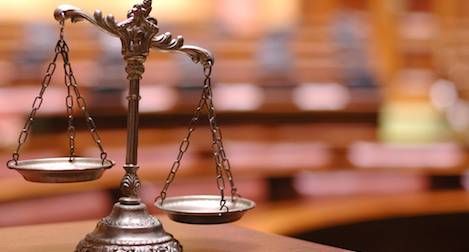
100 Must-Read Books about the Law and Social Justice
For the past several months, Book Riot has been getting a lot of requests for recommendations for books explaining why our political and legal systems are the way they are. (We cannot possibly imagine why…) So for your reading pleasure we present “100 Must-Read Books about the Law and Social Justice.”
For this list, I interpreted “law” broadly. Law is not just something that happens in courtrooms and legislatures; it infuses our whole lives. So while you’ll find plenty of books about the Supreme Court and its most famous decisions, you’ll also find some on the everyday impacts of the criminal justice system, the experiences of people in the workplace, and deep dives into the question of how our laws and legal system became what they are now.
While most of these books about the law are focused on the United States, our neighbors to the north have not been left out, with some stellar examples of Canadian legal history. There are also a few selections from Europe, Latin America, and South Africa, but full coverage will have to wait for a future list.
Without further ado… 100 books about the law and more.
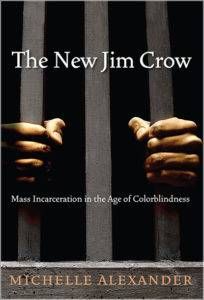
2. America’s Constitution: A Biography by Akhil Reed Amar: “Incisive, entertaining, and occasionally controversial, this ‘biography’ of America’s framing document explains not only what the Constitution says but also why the Constitution says it.”
3. Carnal Crimes: Sexual Assault Law in Canada, 1900-1975 by Constance Backhouse: “Using a case-study approach, Constance Backhouse explores nine sexual assault trials from across the country throughout the twentieth century.”
4. Forcing the Spring: Inside the Fight for Marriage Equality by Jo Becker: “Focusing on the historic legal challenge of California’s ban on same-sex marriage, Becker offers a gripping, behind-the scenes narrative told with the lightning pace of a great legal thriller.”
5. The Common Legal Past of Europe, 1000-1800 by Manlio Bellomo:
“With a vigor and passion rarely found in a scholarly text, Manlio Bellomo has written a broad history of the western European legal tradition.”
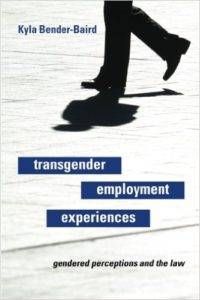
7. Policing the National Body: Race, Gender and Criminalization in the United States edited by Anannya Bhattacharjee and Jael Silliman: “Policing the National Body places issues of race, class, and gender at the center of its reproductive rights and social justice agenda by focusing on a key concern among women of color and poor communities today: the difficulty of maintaining families and sustaining community in the face of increasing criminalization.”
8. Madison’s Hand: Revising the Constitutional Convention by Mary Sarah Bilder: “James Madison’s Notes on the 1787 Constitutional Convention have acquired nearly unquestioned authority as the description of the U.S. Constitution’s creation. No document provides a more complete record of the deliberations in Philadelphia or depicts the Convention’s charismatic figures, crushing disappointments, and miraculous triumphs with such narrative force. But how reliable is this account?”
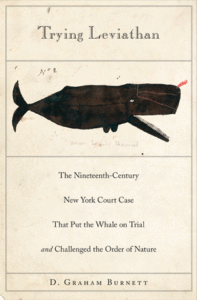
10. Let’s Get Free: A Hip-Hop Theory of Justice by Paul Butler: “Paul Butler was an ambitious federal prosecutor, a Harvard Law grad who gave up his corporate law salary to fight the good fight—until one day he was arrested on the street and charged with a crime he didn’t commit.”
11. Policing the Planet: Why the Policing Crisis Led to Black Lives Matter edited by Jordan T. Camp and Christina Heatherton: “Combining firsthand accounts from activists with the research of scholars and reflections from artists, Policing the Planet traces the global spread of the broken-windows policing strategy. It’s a doctrine that has vastly broadened police power the world over—to deadly effect.”
12. Misconceptions: Unmarried Motherhood and the Ontario Children of Unmarried Parents Act, 1921-1969 by Lori Chambers: “Chambers shows that the solutions to unwed pregnancy promoted in the reforms of 1921 were themselves based upon misconceptions. Misconceptions argues that child welfare measures which simultaneously seek to rescue children and punish errant women will not, and cannot, succeed in alleviating child or maternal poverty.”
13. The Case Against the Supreme Court by Erwin Chemerinsky: “In this devastating book, Erwin Chemerinsky—“one of the shining lights of legal academia” (The New York Times)—shows how, case by case, for over two centuries, the hallowed Court has been far more likely to uphold government abuses of power than to stop them.”
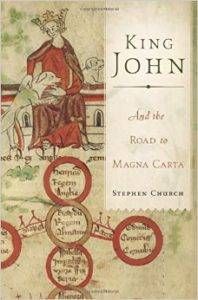
Stephen Church: “In this authoritative biography, Church describes how it was that a king famous for his misrule gave rise to Magna Carta, the blueprint for good governance.”
15. Between the World and Me by Ta-Nehisi Coates: “Americans have built an empire on the idea of ‘race,’ a falsehood that damages us all but falls most heavily on the bodies of black women and men—bodies exploited through slavery and segregation, and, today, threatened, locked up, and murdered out of all proportion.”
16. Sisters in the Struggle : African-American Women in the Civil Rights-Black Power Movement edited by Bettye Collier-Thomas and V.P. Franklin: “Women were at the forefront of the civil rights struggle, but their indvidiual stories were rarely heard. Only recently have historians begun to recognize the central role women played in the battle for racial equality.”
17. The Long, Lingering Shadow: Slavery, Race, and Law in the American Hemisphere by Robert Cottrol: “Students of American history know of the law’s critical role in systematizing a racial hierarchy in the United States. Showing that this history is best appreciated in a comparative perspective, The Long, Lingering Shadow looks at the parallel legal histories of race relations in the United States, Brazil, and Spanish America.”
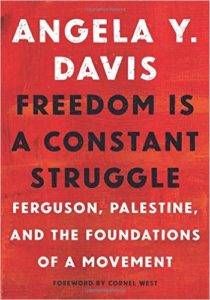
19. Governing Immigration Through Crime: A Reader edited by Julie Dowling and Jonathan Inda: “In the United States, immigration is generally seen as a law and order issue. Amidst increasing anti-immigrant sentiment, unauthorized migrants have been cast as lawbreakers. Governing Immigration Through Crime offers a comprehensive and accessible introduction to the use of crime and punishment to manage undocumented immigrants.”
20. You Have the Right to Remain Innocent by James Duane: “Using actual case histories of innocent men and women exonerated after decades in prison because of information they voluntarily gave to police, Professor Duane demonstrates the critical importance of a constitutional right not well or widely understood by the average American. Reflecting the most recent attitudes of the Supreme Court, Professor Duane argues that it is now even easier for police to use your own words against you.”
21. A Legal History of the Civil War and Reconstruction: A Nation of Rights by Laura F. Edwards: “Although hundreds of thousands of people died fighting in the Civil War, perhaps the war’s biggest casualty was the nation’s legal order. A Nation of Rights explores the implications of this major change by bringing legal history into dialogue with the scholarship of other historical fields.”
22. The Informant: A True Story by Kurt Eichenwald: “In this gripping account unfolds one of the most captivating and bizarre tales in the history of the FBI and corporate America.”
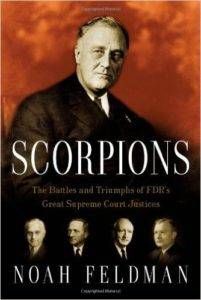
24. Ballot Battles: The History of Disputed Elections in the United States by Edward Foley: “In Ballot Battles, Edward Foley presents a sweeping history of election controversies in the United States, tracing how their evolution generated legal precedents that ultimately transformed how we determine who wins and who loses.”
25. Discipline & Punish: The Birth of the Prison by Michel Foucault: “In this brilliant work, the most influential philosopher since Sartre suggests that such vaunted reforms as the abolition of torture and the emergence of the modern penitentiary have merely shifted the focus of punishment from the prisoner’s body to his soul.”
26. Herculine Barbin (Being the Recently Discovered Memoirs of a Nineteenth Century French Hermaphrodite) edited by Michel Foucault: “With an eye for the sensual bloom of young schoolgirls, and the torrid style of the romantic novels of her day, Herculine Barbin tells the story of her life as a hermaphrodite.”
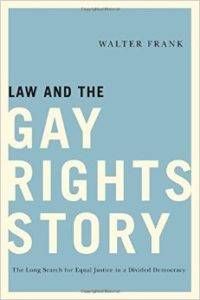
28. Law in America: A Short History by Lawrence M. Friedman: “In the masterful hands of the subject’s greatest living historian, the story of the evolution of our laws serves to lay bare the deciding struggles over power and justice that have shaped this country from its birth pangs to the present. Law in America is a supreme example of the historian’s art, its brevity a testament to the great elegance and wit of its composition.”
29. The Legal Ideology of Removal: The Southern Judiciary and the Sovereignty of Native American Nations by Tim Garrison: “This study is the first to show how state courts enabled the mass expulsion of Native Americans from their southern homelands in the 1830s. Our understanding of that infamous period, argues Tim Alan Garrison, is too often molded around the towering personalities of the Indian removal debate, including President Andrew Jackson, Cherokee leader John Ross, and United States Supreme Court Justice John Marshall. This common view minimizes the impact on Indian sovereignty of some little-known legal cases at the state level.”
30. Civil Rights Stories edited by Myriam Gilles and Risa Goluboff: “These stories give the students and faculty members a deeper understanding of the historical and cultural background of the cases and an insight into their long term impact on the development of civil rights law.”
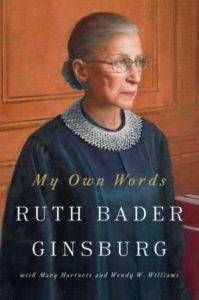
32. Lawyers and Legal Culture in British North America: Beamish Murdoch of Halifax by Philip Girard: “From award-winning biographer Philip Girard, Lawyers and Legal Culture in British North America is the first history of the legal profession in Canada to emphasize its cross-provincial similarities and its deep roots in the colonial period.”
33. Unequal Freedom: How Race and Gender Shaped American Citizenship and Labor by Evelyn Nakano Glenn: “The inequalities that persist in America have deep historical roots. Evelyn Nakano Glenn untangles this complex history in a unique comparative regional study from the end of Reconstruction to the eve of World War II.”
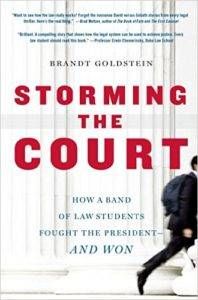
35. Inherently Unequal: The Betrayal of Equal Rights by the Supreme Court, 1865-1903 by Lawrence Goldstone: “A potent and original examination of how the Supreme Court subverted justice and empowered the Jim Crow era.”
36. Vagrant Nation: Police Power, Constitutional Change, and the Making of the 1960s by Risa Goluboff: “In 1950s America, it was remarkably easy for police to arrest almost anyone for almost any reason. The criminal justice system-and especially the age-old law of vagrancy-served not only to maintain safety and order but also to enforce conventional standards of morality and propriety. A person could be arrested for sporting a beard, making a speech, or working too little. Yet by the end of the 1960s, vagrancy laws were discredited and American society was fundamentally transformed. What happened?”
37. The Burger Court and the Rise of the Judicial Right by Michael J. Graetz and Linda Greenhouse: “A revelatory look at the Warren Burger Supreme Court finds that it was not moderate or transitional, but conservative—and it shaped today’s constitutional landscape.”
38. Becoming Justice Blackmun: Harry Blackmun’s Supreme Court Journey by Linda Greenhouse: “In this acclaimed biography, Linda Greenhouse of The New York Times draws back the curtain on America’s most private branch of government, the Supreme Court. Greenhouse was the first print reporter to have access to the extensive archives of Justice Harry A. Blackmun (1908–99), the man behind numerous landmark Supreme Court decisions, including Roe v. Wade.”
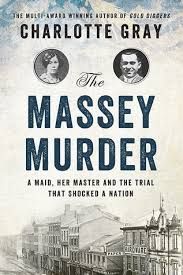
40. New York Times v. Sullivan: Civil Rights, Libel Law, and the Free Press by Kermit L. Hall and Melvin I. Urofsky: “Illuminating a classic case from the turbulent civil rights era of the 1960s, two of America’s foremost legal historians Kermit Hall and Melvin Urofsky provide a compact and highly readable updating of one of the most memorable decisions in the Supreme Court’s canon.”
41. The Alien and Sedition Acts of 1798: Testing the Constitution by Terri Diane Halperin: “In The Alien and Sedition Acts of 1798, Terri Diane Halperin discusses the passage of these laws and the furor over them, as well as the difficulties of enforcement.”
42. A Civil Action by Jonathan Harr: “This true story of an epic courtroom showdown, where two of the nation’s largest corporations were accused of causing the deaths of children from water contamination, was a #1 national bestseller and winner of the National Book Critics Circle Award.”
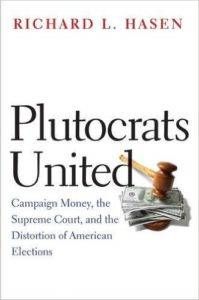
44. The Great Dissent: How Oliver Wendell Holmes Changed His Mind—and Changed the History of Free Speech in America by Thomas Healy: “Free speech as we know it comes less from the First Amendment than from a most unexpected source: Supreme Court Justice Oliver Wendell Holmes. A lifelong skeptic, he disdained all individual rights, including the right to express one’s political views. But in 1919, it was Holmes who wrote a dissenting opinion that would become the canonical affirmation of free speech in the United States.”
45. Sisters in Law: How Sandra Day O’Connor and Ruth Bader Ginsburg Went to the Supreme Court and Changed the World by Linda Hirshman: “The relationship between Sandra Day O’Connor and Ruth Bader Ginsburg—Republican and Democrat, Christian and Jew, western rancher’s daughter and Brooklyn girl—transcends party, religion, region, and culture. Strengthened by each other’s presence, these groundbreaking judges, the first and second women to serve on the highest court in the land, have transformed the Constitution and America itself, making it a more equal place for all women.”
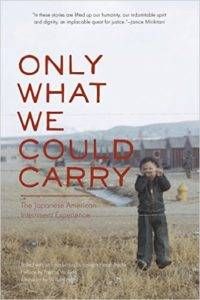
47. A People’s History of the Supreme Court: The Men and Women Whose Cases and Decisions Have Shaped Our Constitution by Peter Irons: “In the tradition of Howard Zinn’s classic A People’s History of the United States, Peter Irons chronicles the decisions that have influenced virtually every aspect of our society, from the debates over judicial power to controversial rulings in the past regarding slavery, racial segregation, and abortion, as well as more current cases about school prayer, the Bush/Gore election results, and ‘enemy combatants.'”
48. The Drone Memos: Targeted Killing, Secrecy, and the Law by Jameel Jaffer: “The Drone Memos collects for the first time the legal and policy documents underlying the U.S. government’s deeply controversial practice of “targeted killing”—the extrajudicial killing of suspected terrorists and militants, typically using remotely piloted aircraft or ‘drones.’”
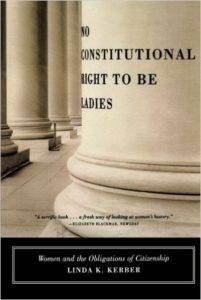
50. The Framers’ Coup: The Making of the United States Constitution by
Michael J. Klarman: “Based on prodigious research and told largely through the voices of the participants, Michael Klarman’s The Framers’ Coup narrates how the Framers’ clashing interests shaped the Constitution–and American history itself.”
51. Indelible Ink: The Trials of John Peter Zenger and the Birth of America’s Free Press by Richard Kluger: “When in 1733 a small newspaper, the New-York Weekly Journal, printed scathing articles assailing the new British governor, William Cosby, as corrupt and abusive, colonial New York was scandalized.”
52. Country of My Skull: Guilt, Sorrow, and the Limits of Forgiveness in the New South Africa by Antjie Krog: “Country of My Skull captures the complexity of the Truth Commission’s work. The narrative is often traumatic, vivid, and provocative. Krog’s powerful prose lures the reader actively and inventively through a mosaic of insights, impressions, and secret themes. This compelling tale is Antjie Krog’s profound literary account of the mending of a country that was in colossal need of change.”
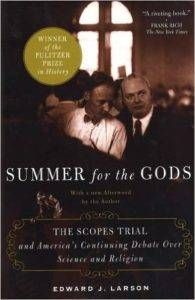
54. Resistance Behind Bars: The Struggles Of Incarcerated Women by Victoria Law and Laura Whitehorn: “As it examines daily struggles against appalling prison conditions and injustices, this collection of real-life prisoners’ stories and analysis of the prison landscape as it is today documents both collective organizing and individual resistance among women incarcerated in the United States.”
55. Environmental Law Stories edited by Richard Lazarus and Oliver Houck: “Environmental Law Stories feature characters as diverse as community activists, small farmers, big businesses, dedicated scientists, skilled lawyers, strong-willed judges, and Presidents of the United States. Four of the ten selected cases established the field of environmental law, three others refined it, and the final three have sought to limit its effectiveness and reach. This selection mirrors the development of the field of environmental law, from the first, heady days of its creation to its current conflicts with other laws and values, including some embedded in the Constitution.”
56. Our Undemocratic Constitution: Where the Constitution Goes Wrong (And How We the People Can Correct It) by Sanford Levinson: “Levinson argues that too many of our Constitution’s provisions promote either unjust or ineffective government. Under the existing blueprint, we can neither rid ourselves of incompetent presidents nor assure continuity of government following catastrophic attacks. Less important, perhaps, but certainly problematic, is the appointment of Supreme Court judges for life. Adding insult to injury, the United States Constitution is the most difficult to amend or update of any constitution currently existing in the world today. Democratic debate leaves few stones unturned, but we tend to take our basic constitutional structures for granted. Levinson boldly challenges the American people to undertake a long overdue public discussion on how they might best reform this most hallowed document and construct a constitution adequate to our democratic values.”
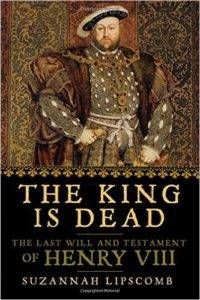
58. Denial: Holocaust History on Trial by Deborah E. Lipstadt: “Denial is Lipstadt’s riveting, blow-by-blow account of this singular legal battle, which resulted in a formal denunciation of a Holocaust denier that crippled the movement for years to come. Lipstadt’s victory was proclaimed on the front page of major newspapers around the world, such as The Times (UK), which declared that ‘history has had its day in court and scored a crushing victory.’”
59. White by Law: The Legal Construction of Race by Ian Haney López: “In White by Law, Haney López traced the reasoning employed by the courts in their efforts to justify the whiteness of some and the non-whiteness of others, and revealed the criteria that were used, often arbitrarily, to determine whiteness, and thus citizenship: skin color, facial features, national origin, language, culture, ancestry, scientific opinion, and, most importantly, popular opinion.”
60. Ratification: The People Debate the Constitution, 1787-1788 by Pauline Maier: “In this splendid new history, Pauline Maier tells the dramatic story of the yearlong battle over ratification that brought such famous founders as Washington, Hamilton, Madison, Jay, and Henry together with less well-known Americans who sometimes eloquently and always passionately expressed their hopes and fears for their new country.”
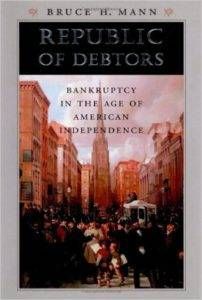
62. At the Dark End of the Street: Black Women, Rape, and Resistance—A New History of the Civil Rights Movement from Rosa Parks to the Rise of Black Power by Danielle L. McGuire: “In this groundbreaking and important book, Danielle McGuire writes about the rape in 1944 of a twenty-four-year-old mother and sharecropper, Recy Taylor, who strolled toward home after an evening of singing and praying at the Rock Hill Holiness Church in Abbeville, Alabama. Seven white men, armed with knives and shotguns, ordered the young woman into their green Chevrolet, raped her, and left her for dead. The president of the local NAACP branch office sent his best investigator and organizer–Rosa Parks–to Abbeville. In taking on this case, Parks launched a movement that exposed a ritualized history of sexual assault against black women and added fire to the growing call for change.”
63. Queer (In)Justice: The Criminalization of LGBT People in the United States by Joey L. Mogul, Andrea J. Ritchie, and Kay Whitlock: “A groundbreaking work that turns a “queer eye” on the criminal legal system, Queer (In)Justice is a searing examination of queer experiences—as ‘suspects,’ defendants, prisoners, and survivors of crime.”
64: 1867: How the Fathers Made a Deal by Christopher Moore: “From the first chapter, he turns a fresh, perceptive, and lucid eye on the people, the issues, and the political theories of Confederation—from John A. Macdonald’s canny handling of leadership to the invention of federalism and the Senate, from the Quebec question to the influence of political philosophers Edmund Burke and Walter Bagehot.”
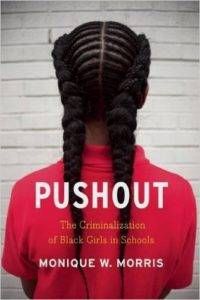
66. The Condemnation of Blackness: Race, Crime, and the Making of Modern Urban America by Khalil Gibran Muhammad: “The idea of black criminality was crucial to the making of modern urban America, as were African Americans’ own ideas about race and crime. Chronicling the emergence of deeply embedded notions of black people as a dangerous race of criminals by explicit contrast to working-class whites and European immigrants, this fascinating book reveals the influence such ideas have had on urban development and social policies.”
67. The First Civil Right: How Liberals Built Prison America by Naomi Murakawa: “In The First Civil Right, Naomi Murakawa inverts the conventional wisdom by arguing that the expansion of the federal carceral state-a system that disproportionately imprisons blacks and Latinos-was, in fact, rooted in the civil-rights liberalism of the 1940s and early 1960s, not in the period after.”
68. Women of Color and the Reproductive Rights Movement by Jennifer Nelson: “Jennifer Nelson tells the story of the feminist struggle for legal abortion and reproductive rights in the 1960s, 1970s, and early 1980s through the particular contributions of women of color.”
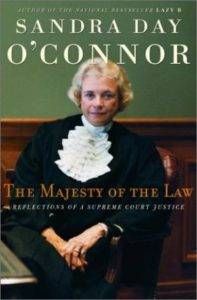
70. Making Foreigners: Immigration and Citizenship Law in America, 1600-2000 by Kunal M. Parker: “Kunal Parker argues that during the earliest stages of American history, being legally constructed as a foreigner, along with being subjected to restrictions on presence and movement, was not confined to those who sought to enter the country from the outside, but was also used against those on the inside. Insiders thus shared important legal disabilities with outsiders.”
72. Brown v. Board of Education: A Civil Rights Milestone and Its Troubled Legacy by James T. Patterson: “Here, in a concise, moving narrative, Bancroft Prize-winning historian James T. Patterson takes readers through the dramatic case and its fifty-year aftermath.”
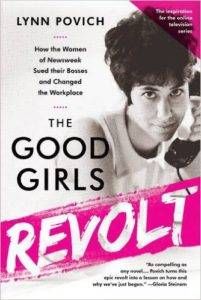
74. The Republic According to John Marshall Harlan by Linda Przybyszewski: “Supreme Court Justice John Marshall Harlan (1833-1911) is best known for condemning racial segregation in his dissent from Plessy v. Ferguson in 1896, when he declared, ‘Our Constitution is color-blind.’ But in other judicial decisions—as well as in some areas of his life—Harlan’s actions directly contradicted the essence of his famous statement. Similarly, Harlan was called the people’s judge for favoring income tax and antitrust laws, yet he also upheld doctrines that benefited large corporations.”
75. Six Women of Salem: The Untold Story of the Accused and Their Accusers in the Salem Witch Trials by Marilynne K. Roach: “Six Women of Salem is the first work to use the lives of a select number of representative women as a microcosm to illuminate the larger crisis of the Salem witch trials.”
76. Killing the Black Body: Race, Reproduction, and the Meaning of Liberty by Dorothy Roberts: “In Killing the Black Body, Northwestern University professor Dorothy Roberts exposes America’s systemic abuse of Black women’s bodies, from slave masters’ economic stake in bonded women’s fertility to government programs that coerced thousands of poor Black women into being sterilized as late as the 1970s.”
77. Women and the Law: Stories edited by Elizabeth M. Schneider and Stephanie M. Wildman: “This book examines landmark cases establishing women’s legal rights, offering accounts of the litigants, history, parties, strategies, and theoretical implications. It will enrich any law school course and can serve as a text for a course on women and the law, gender and law, feminist jurisprudence, or women’s studies. This volume utilizes subject areas common to many women and law casebooks: history, constitutional law, reproductive freedom, the workplace, the family, and women in the legal profession.”
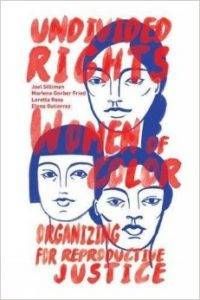
79. Cannibalism and the Common Law: The Story of the Tragic Last Voygage of the Mignonette and the Strange Legal Proceedings to Which it Gave Rise by A.W. Brian Simpson: “Cannibalism and the Common Law is an enthralling classic of legal history. It tells the tragic story of the yacht Mignonette, which foundered on its way from England to Australia in 1884. The killing and eating of one of the crew, Richard Parker, led to the leading case in the defence of necessity, R. v. Dudley and Stephens. It resulted in their being convicted and sentenced to death, a sentence subsequently commuted.”
80. My Beloved World by Sonia Sotomayor: “The first Hispanic and third woman appointed to the United States Supreme Court, Sonia Sotomayor has become an instant American icon. Now, with a candor and intimacy never undertaken by a sitting Justice, she recounts her life from a Bronx housing project to the federal bench, a journey that offers an inspiring testament to her own extraordinary determination and the power of believing in oneself.”
81. Captive Genders: Trans Embodiment and the Prison Industrial Complex edited by Eric A. Stanley and Nat Smith: “Pathologized, terrorized, and confined, trans/gender non-conforming and queer folks have always struggled against the prison industrial complex. Eric A. Stanley and Nat Smith bring together current and former prisoners, activists, and academics for a new understanding of how race, gender, ability, and sexuality are lived under the crushing weight of captivity.”
82. Courting Death: The Supreme Court and Capital Punishment by Carol S. Steiker and Jordan M. Steiker: “Unique among Western democracies in refusing to eradicate the death penalty, the United States has attempted instead to reform and rationalize state death penalty practices through federal constitutional law. Courting Death traces the unusual and distinctive history of top-down judicial regulation of capital punishment under the Constitution and its unanticipated consequences for our time.”
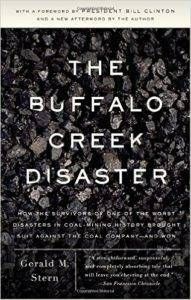
84. Six Amendments: How and Why We Should Change the Constitution by John Paul Stevens: “By the time of his retirement in June 2010, John Paul Stevens had become the second longest serving Justice in the history of the Supreme Court. Now he draws upon his more than three decades on the Court, during which he was involved with many of the defining decisions of the modern era, to offer a book like none other.”
85. Perilous Times: Free Speech in Wartime: From the Sedition Act of 1798 to the War on Terrorism by Geoffrey R. Stone: “Geoffrey Stone’s Perilous Times incisively investigates how the First Amendment and other civil liberties have been compromised in America during wartime. Stone delineates the consistent suppression of free speech in six historical periods from the Sedition Act of 1798 to the Vietnam War, and ends with a coda that examines the state of civil liberties in the Bush era.”
86. Speaking Freely: Whitney v. California and American Speech Law by Philippa Strum: “Anita Whitney was a child of wealth and privilege who became a vocal leftist early in the twentieth century, supporting radical labor groups such as the Wobblies and helping to organize the Communist Labor Party. In 1919 she was arrested and charged with violating California’s recently passed laws banning any speech or activity intended to change the American political and economic systems. The story of the Supreme Court case that grew out of Whitney’s conviction, told in full in this book, is also the story of how Americans came to enjoy the most liberal speech laws in the world.”
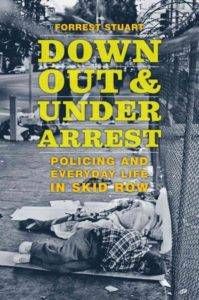
88. Because of Sex: One Law, Ten Cases, and Fifty Years That Changed American Women’s Lives at Work by Gillian Thomas: “Best known as a monumental achievement of the civil rights movement, the 1964 Civil Rights Act also revolutionized the lives of America’s working women. Title VII of the law made it illegal to discriminate “because of sex.” But that simple phrase didn’t mean much until ordinary women began using the law to get justice on the job―and some took their fights all the way to the Supreme Court.”
89. Feminist Legal History: Essays on Women and Law edited by Tracy A. Thomas and Tracey Jean Boisseau: “Feminist Legal History represents feminist legal historians’ efforts to define their field, by showcasing historical research and analysis that demonstrates how women were denied legal rights, how women used the law proactively to gain rights, and how, empowered by law, women worked to alter the law to try to change gendered realities.”
90. The Run of His Life: The People v. O. J. Simpson by Jeffrey Toobin: “The definitive account of the O. J. Simpson trial, The Run of His Life is a prodigious feat of reporting that could have been written only by the foremost legal journalist of our time.”
91. Uncertain Justice: The Roberts Court and the Constitution by Laurence Tribe and Joshua Matz: “From Citizens United to its momentous rulings regarding Obamacare and gay marriage, the Supreme Court under Chief Justice John Roberts has profoundly affected American life. Yet the court remains a mysterious institution, and the motivations of the nine men and women who serve for life are often obscure. Now, in Uncertain Justice, Laurence Tribe and Joshua Matz show the surprising extent to which the Roberts Court is revising the meaning of our Constitution.”
92. The Nuremberg Trial by Ann Tusa and John Tusa: “Here is a gripping account of the major postwar trial of the Nazi hierarchy in World War II. The Nuremberg Trial brilliantly recreates the trial proceedings and offers a reasoned, often profound examination of the processes that created international law. From the whimpering of Kaltenbrunner and Ribbentrop on the stand to the icy coolness of Goering, each participant is vividly drawn.”
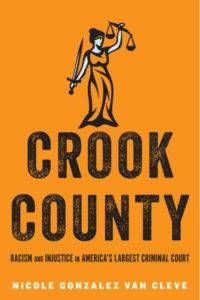
94. The African Canadian Legal Odyssey: Historical Essays edited by Barrington Walker: “The African Canadian Legal Odyssey explores the history of African Canadians and the law from the era of slavery until the early twenty-first century. This collection demonstrates that the social history of Blacks in Canada has always been inextricably bound to questions of law, and that the role of the law in shaping Black life was often ambiguous and shifted over time.”
95. Race, Sex, and the Freedom to Marry: Loving v. Virginia by Peter Wallenstein: “In 1958 Mildred Jeter and Richard Loving, two young lovers from Caroline County, Virginia, got married. Soon they were hauled out of their bedroom in the middle of the night and taken to jail. Their crime? Loving was white, Jeter was not, and in Virginia—as in twenty-three other states then—interracial marriage was illegal. Their experience reflected that of countless couples across America since colonial times. And in challenging the laws against their marriage, the Lovings closed the book on that very long chapter in the nation’s history. Race, Sex, and the Freedom to Marry tells the story of this couple and the case that forever changed the law of race and marriage in America.”
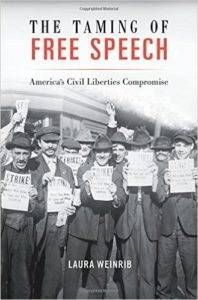
97. American Legal History: A Very Short Introduction by G. Edward White: “Eminent legal scholar G. Edward White offers a compact overview that sheds light on the impact of law on a number of key social issues. Rather than offer a straight chronological history, the book instead traces important threads woven throughout our nation’s past, looking at how law shaped Native American affairs, slavery, business, and home life, as well as how it has dealt with criminal and civil offenses. White shows that law has not always been used to exemplary ends.”
98. The Origins of Reasonable Doubt: Theological Roots of the Criminal Trial by James Q. Whitman: “To be convicted of a crime in the United States, a person must be proven guilty ‘beyond a reasonable doubt.’ But what is reasonable doubt? Even sophisticated legal experts find this fundamental doctrine difficult to explain. In this accessible book, James Q. Whitman digs deep into the history of the law and discovers that we have lost sight of the original purpose of ‘reasonable doubt.’ It was not originally a legal rule at all, he shows, but a theological one.”
99. The Brethren: Inside the Supreme Court by Bob Woodward and Scott Armstrong: “The Brethren is the first detailed behind-the-scenes account of the Supreme Court in action. Bob Woodward and Scott Armstrong have pierced its secrecy to give us an unprecedented view of the Chief and Associate Justices—maneuvering, arguing, politicking, compromising, and making decisions that affect every major area of American life.”
100. The Battle for the Black Ballot: Smith v. Allwright and the Defeat of the Texas All White Primary by Charles L. Zelden: “The history of voting rights in America is a checkerboard marked by dogged progress against persistent prejudice toward an expanding inclusiveness. The Supreme Court decision in Smith v. Allwright is a crucial chapter in that broader story and marked a major turning point for the modern civil rights movement.”











